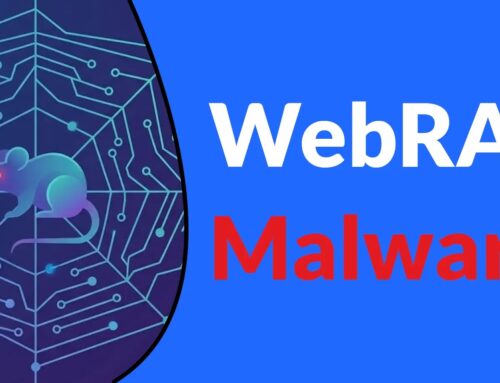
North Korean Threat Actors Reveal Their Tactics in Replacing Infrastructure With New Assets
North Korean Threat Actors: Unmasking “Contagious Interview” Tactics
In the high-stakes world of cybersecurity, staying ahead of evolving threats is paramount. Recent intelligence reveals a dangerous new phase in the operations of North Korean threat actors, shifting their focus to infrastructure replacement with newly acquired assets. This tactical pivot, underscored by campaigns like “Contagious Interview,” highlights the sophisticated and adaptive nature of state-sponsored cyber espionage. Understanding these methods is no longer a luxury but a critical necessity for every organization, particularly those operating in the cryptocurrency and financial sectors.
The “Contagious Interview” Campaign: A Deceptive Employment Lure
Over the past year, cybersecurity researchers have meticulously tracked a significant surge in activity from North Korean threat actors. Their primary target: professionals within the burgeoning cryptocurrency industry. This concerted effort employs military-grade social engineering, cloaked within a seemingly benign job application process. The campaign, aptly dubbed “Contagious Interview,” exemplifies the cunning and persistence of these adversaries.
The modus operandi is straightforward yet devastatingly effective: potential victims receive invitations to participate in mock assessments, often disguised as part of a legitimate hiring pipeline. These seemingly innocuous interactions mask the true intent: the delivery of sophisticated malware designed to compromise systems and facilitate data exfiltration or further network penetration. The allure of career advancement or a promising new role renders targets highly susceptible to these advanced phishing and social engineering techniques.
Leveraging Social Engineering for Malware Delivery
The success of “Contagious Interview” hinges on the mastery of social engineering. Rather than relying on brute-force attacks or overt technical exploits, these actors meticulously craft scenarios that exploit human trust and professional ambition. The process often involves:
- Tailored Lure Documents: Job descriptions, interview schedules, and assessment materials are meticulously designed to appear legitimate and highly professional, often mirroring those from reputable companies.
- Interactive Simulations: The “mock assessments” are not merely static documents; they often require interaction, leading victims down a path that ultimately deploys the malicious payload.
- Impersonation: Threat actors meticulously research and impersonate recruiters or HR personnel, building rapport and trust with their targets before the final stage of malware delivery.
This approach bypasses many traditional security layers, as the initial point of compromise relies on human interaction and deception rather than technical vulnerabilities alone.
Infrastructure Replacement: A Strategic Shift
What differentiates this current wave of activity is the observed strategic shift towards infrastructure replacement. Instead of merely exploiting existing vulnerabilities or maintaining persistence on compromised systems, North Korean actors are actively establishing new operational infrastructure. This suggests a long-term strategy aimed at:
- Increased Resilience: New infrastructure makes it harder for defenders to track and disrupt their operations, as they are not reliant on previously identified C2 servers or domains.
- Obscured Attribution: Fresh assets help to further obfuscate the origin of attacks, complicating attribution efforts and delaying defensive responses.
- Enhanced Capabilities: Newly acquired or established infrastructure may provide access to more robust tools, greater bandwidth, or novel attack vectors.
This proactive approach signifies a growing level of sophistication and resource allocation by these state-sponsored entities.
Remediation Actions: Fortifying Defenses
Defending against such cunning and persistent adversaries requires a multi-layered approach that combines technical safeguards with robust human education. For organizations, particularly those in the cryptocurrency and financial sectors, immediate action is crucial:
- Phishing and Social Engineering Awareness Training: Conduct regular, rigorous training for all employees, emphasizing the tactics used in job-application scams and other social engineering lures. Simulate these attacks internally to gauge readiness.
- Strict Email Verification Protocols: Implement and enforce stringent policies for verifying the authenticity of unsolicited emails, especially those related to job applications, interviews, or attachments. Always cross-reference contact information through official company channels.
- Endpoint Detection and Response (EDR) Systems: Deploy advanced EDR solutions to monitor endpoints for suspicious activity, detect malware at various stages of execution, and provide rapid response capabilities.
- Network Segmentation: Isolate critical systems and data through network segmentation to limit lateral movement in the event of a breach.
- Multi-Factor Authentication (MFA): Enforce MFA across all systems and applications to prevent unauthorized access even if credentials are compromised.
- Regular Software Patching and Updates: Ensure all operating systems, applications, and security software are updated regularly to patch known vulnerabilities. While social engineering is the primary vector here, technical vulnerabilities can still be exploited post-initial access.
- Threat Intelligence Sharing: Actively participate in threat intelligence communities and subscribe to feeds that provide real-time updates on state-sponsored actors and their TTPs.
Tools for Enhanced Security Posture
Implementing the right tools is critical for a robust defense strategy:
| Tool Name | Purpose | Link |
|---|---|---|
| Proofpoint, Mimecast, Avanan | Email Security Gateway (ESG) for advanced threat protection against phishing and malware. | N/A (Vendor-specific websites) |
| CrowdStrike Falcon, SentinelOne, Microsoft Defender for Endpoint | Endpoint Detection and Response (EDR) for real-time threat detection and remediation. | N/A (Vendor-specific websites) |
| KnowBe4, Cofense | Security Awareness Training and Phishing Simulation platforms. | N/A (Vendor-specific websites) |
| Palo Alto Networks, Fortinet | Next-Generation Firewall (NGFW) for network segmentation and perimeter defense. | N/A (Vendor-specific websites) |
Insights and Outlook
The “Contagious Interview” campaign and the broader trend of infrastructure replacement underscore the strategic evolution of North Korean threat actors. Their sophisticated blend of military-grade social engineering and continuous adaptation demands heightened vigilance and proactive defense strategies from organizations globally. Ignoring these advanced persistent threats is no longer an option. By understanding their tactics, investing in robust security solutions, and most importantly, empowering employees with awareness, we can collectively build a stronger defense against these persistent and dangerous adversaries.





